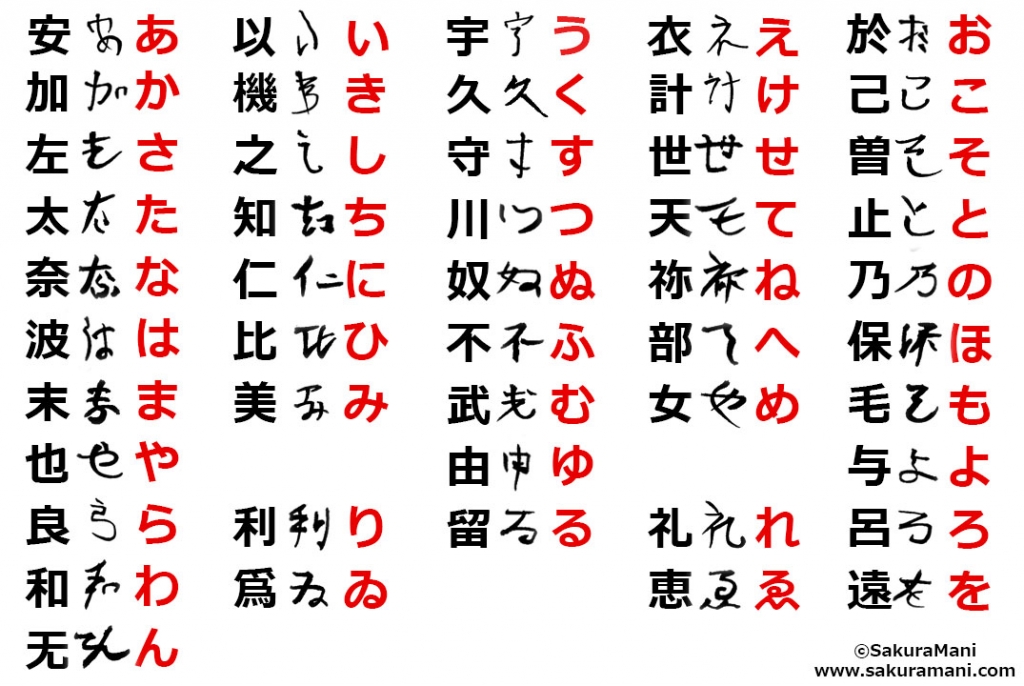
Hiragana is a syllabary (collection of symbols) that represent all the sounds in the Japanese language. Hirigana is used alongside many other sets of characters like Kanji and Katakana to write Japanese words. Romaji is another writing system that utilizes the English alphabet to write the pronunciations for common Japanese words. It can be used to write the pronunciation of Hiragana symbols. Hirigana is often used for help verbs, conjugations, and particles. There are 46 Hiragana, some with different pronunciations.
Hiragana sets up the basis for all pronunciations in Japanese and is commonly used in writing. People learning Japanese often start learning with Hiragana because it is the basis for the other character sets. Every Japanese word can be written using Hiragana. Learning Hiragana will allow you the basis for writing, reading and speaking Japanese. Furigana is a Hiragana written alongside regular words that helps make their meaning clearer.
Japan did not have an official written language until 50 AD. The earliest forms of the language used Chinese characters to represent Japanese words. One of these languages was called Man’yōgana from which Hiragana and Katakana were derived.

いろは (Iroha) is a poem that contains almost all the Hiragana character exactly once.
The poem is written like this:
いろはにほへと
Even the blossoming flowers
ちりぬるを
Will eventually scatter
わかよたれそ
Who in our world
つねならむ
Is unchanging?
うゐのおくやま
The deep mountains of karma
けふこえて
We cross them today
あさきゆめみし
And we shall not have superficial dreams
ゑひもせす
Nor be deluded.
(Smith, pangrams) This poem is a perfect pangram, meaning it does not reuse any of the characters. However, many of the
characters included in the poem like ゑ are no longer used.
Each kana in Japanese has a particular stroke order and pressure. This ensures that symbols are written the same way and easy to distinguish. Many symbols look very similar and stroke order ensures the symbols are consistent between different writers.